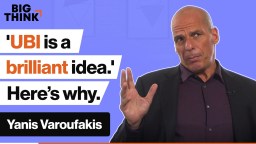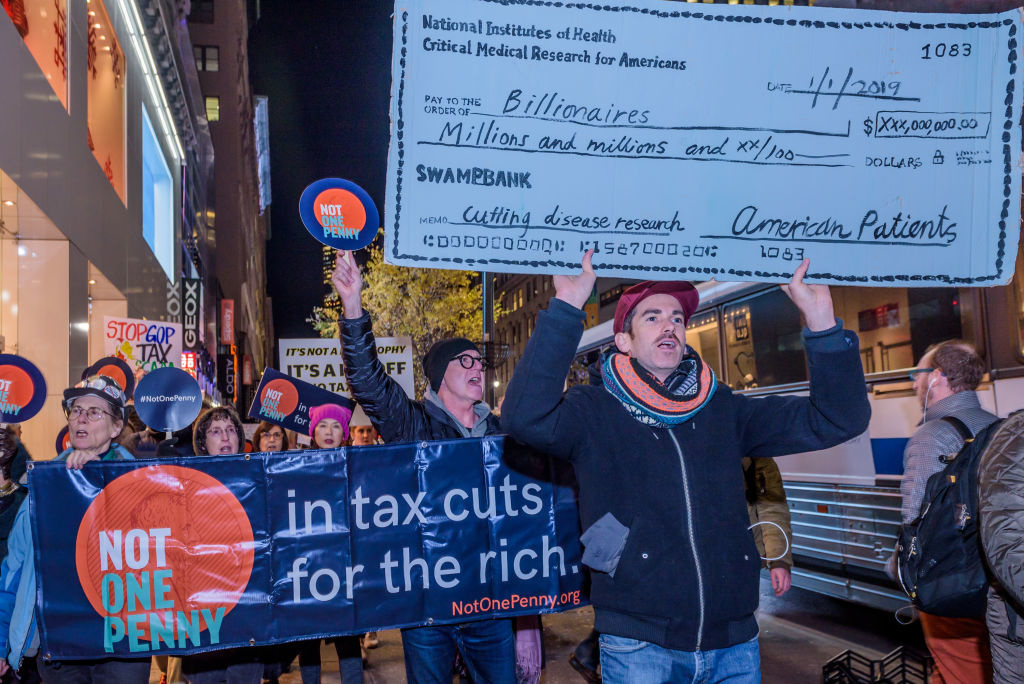Timothy Snyder: Well, the whole idea of best interests in the question, "Why do people vote against their best interests?" is not an objective thing in nature. It's one of the very problems in the politics of inevitability, is that we think like economists and we say, "Well, everybody is rational in the narrow economical sense, everybody knows what's good for them." And that's just not true, or rather the ability of people to discern what their interests are depends upon a process of education, which includes not just reasoning mathematically, which is very important, but also it has to include some kind of humanistic side where people learn to criticize or think critically about what they hear, learn to make distinctions among various kinds of media.
Because that notion of "one's best interest" is not at all natural, it's the product of a certain kind of education. And that kind of education can be undone, first of all it can not be done, but it can also be undone, one can deliberately appeal to the parts of the mind which aren't concerned with the future, with math, with critical thinking, but to the parts of the mind which think in terms of "us and them," "friend and enemy," and you can draw people into these cycles. And the less—and this is how it fits together with inequality—the less people see a good future for themselves if they think in terms of interests, the more they're drawn into a different way of thinking where it's not about their individual interests, but it's more about feeling like they're on the "right team," they're on the "right side."
For a lot of people in the U.S. now I think it's a little bit like they want to ride the bench for the winning team. They know that things aren't going well for them personally, but they want to feel like they're on the right side. And that helps to explain the appeal of someone like a Donald Trump who, of course, himself is a failure but has the skills to present himself as a success and can get people thinking, "Yeah, I want to be on that team. I'm not going to do any better economically, but I'm going to feel better about myself, because I'm on the winning team, I'm on what it feels like the winning team." So the whole thing about best interests has to be seen as a project.
You have to educate people, you have to take anxiety away by providing certain basic things like schooling and pensions and vacations so people can pause and think a little bit about themselves and their future. If you don't provide those basic elements of (I would say) political civilization then people are too anxious, it's hard for them to get their minds around what their interest actually are.
And beyond that if you don't educate them positively towards thinking with both math and with the humanities they're not going to get there anyway. So it's a project. A basic thing that we Americans forget—and a basic thing that politics of inevitability shrouds—is that creating the individual is a project. It takes a lot of work to create an individual. I mean we want to have thinking individuals. We want to have people who know what their best interests are. We want to have people who go thoughtfully into that ballot box, but that's a project; we're not born that way.
I mean as a father I can assure you that we are not born that way. I think it's the noblest and best thing we do, to try to create individuals, but we can't just leave it to chance, and I think that's where we go wrong. One of the basic ways we go wrong with the politics of inevitability, we think, "Okay, automatically we're going to be those kinds of rational people," but we're not automatically those kinds of rational people. I mean the irony is if you want to create individuals who can think about their own best interests you have to, as a society, say, "We agree to make it a project to educate and form such individuals."






